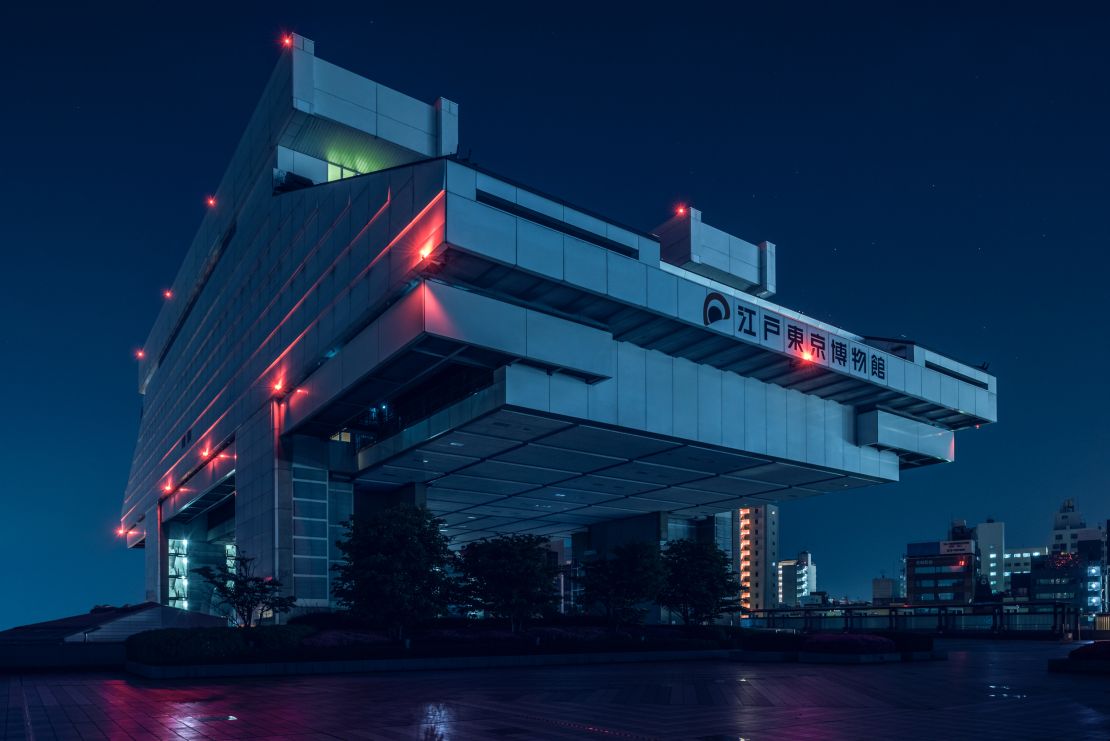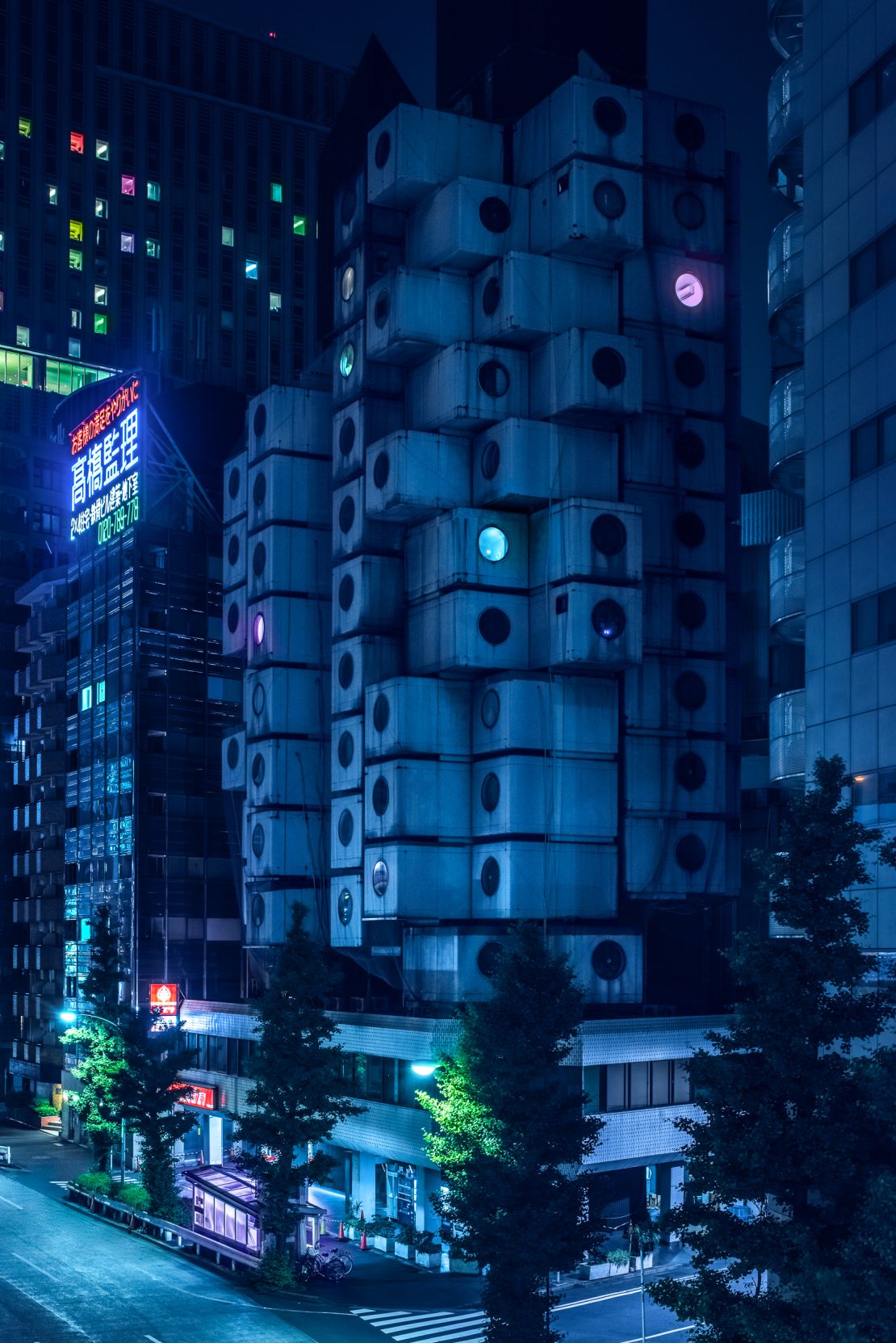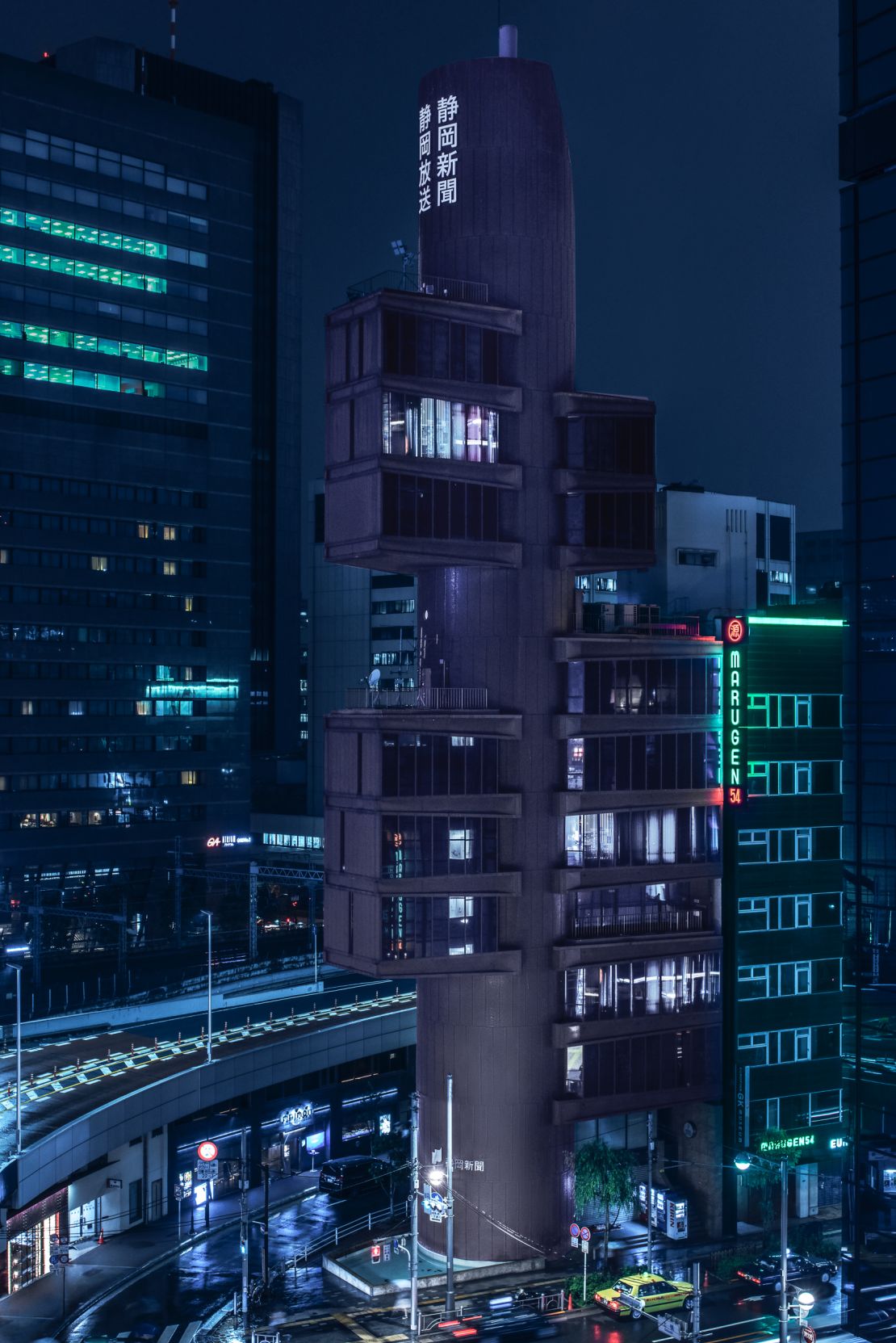The Edo-Tokyo museum, modeled after a classic type of elevated warehouse, is already an impressive building in broad daylight and with no filters.
But in the dead of the night and in the hands of Australian photographer Tom Blachford, it turns into a dystopian megastructure from a distant future, its cavernous looks supercharged by an otherworldly bluish hue.

The photo is part of an all-Tokyo series called “Nihon Noir,” after the Neon-noir movie genre that inspires its aesthetic. “The seminal classic ‘Blade Runner’ was a huge inspiration, not only for color but for aesthetic and approach,” said Blachford in an email interview. He cites the work of “Drive” and “Only God Forgives” director Nicholas Winding-Refn as another source of influence.
“There was quite a lot of post-production involved on these in order to translate the feeling that I wanted. I wanted to push past the orange tungsten glow and remove any feeling of natural or white light. The tones needed to be cool and neon-stained, as to me that’s how the light feels at night in the city.”
Begging and negotiation
Among the featured buildings is a favorite of architecture buffs worldwide, Kisho Kurokawa’s Nakagin Capsule Tower.

Built in a month in 1972, it’s a rare example of Japanese Metabolism, an architectural movement that takes inspiration from biological growth, and consists of 140 independent capsules or “living cells” designed to be individually removed for repairs or replacement. But this was never done and the tower is now mostly abandoned and wrapped in nets that prevent debris from falling onto the street. Large signs at the building entrance warn urban explorers that any attempt to enter the premises will be met with a call to the authorities.
It’s nearly impossible to get a straight shot of the tower, which sits on a tight corner site very close to the street and facing an elevated motorway. So how did Blachford do it?
“I arrived at the site to find that all of the available views from the ground, surrounding footbridges and overpasses were disappointing or ruined by light flare from street lights. I noticed a crew of repairmen working overhead repairing some cables on the underside of the expressway. With a bit of begging and negotiation I managed to convince the entire crew to stop what they were doing, pull up the hydraulics on their crane lift truck and move it back perfectly into position for me in front of the building. They harnessed me up and a few minutes later I was 60 feet in the air in the perfect position to shoot the tower. The resulting shot is one of my favorites I have ever taken.”
Tange-san
The series is defined by the designs of Pritzker Prize-winning architect Kenzo Tange, the founder of Japanese Metabolism and a mentor to Kurokawa. Two of his Tokyo buildings are featured, the Shizuoka Press and Broadcasting Center in the swanky Ginza district and the Fuji TV headquarters on Odaiba island.

Beyond the metabolist movement, Blachford says he was interested in buildings created during the post-modern era of the 1990s as well as tighter street vistas that embodied the cyberpunk feeling of Tokyo. The photos were taken over the course of one week.
“It was a grueling shoot. We shot from around 9PM to 5AM for 6 nights in a row, often walking 12 miles or more each night. I think I took around 150 shots which I whittled down to the final series of 15 images.”
Most of the buildings depicted are at least 20 years old, yet they capture the futuristic essence of the city. As Blachford puts it, he wants the viewer to wonder not “where” they are, but “when” they are.
“The feeling that struck me when I first visited Tokyo was that I had been transported to an advanced parallel universe. I wanted the images to try to convey that feeling.”













